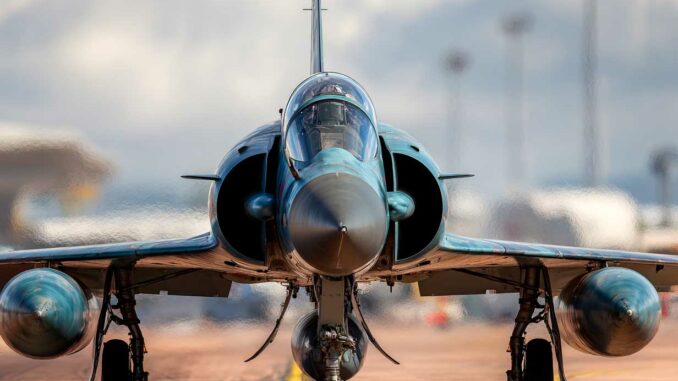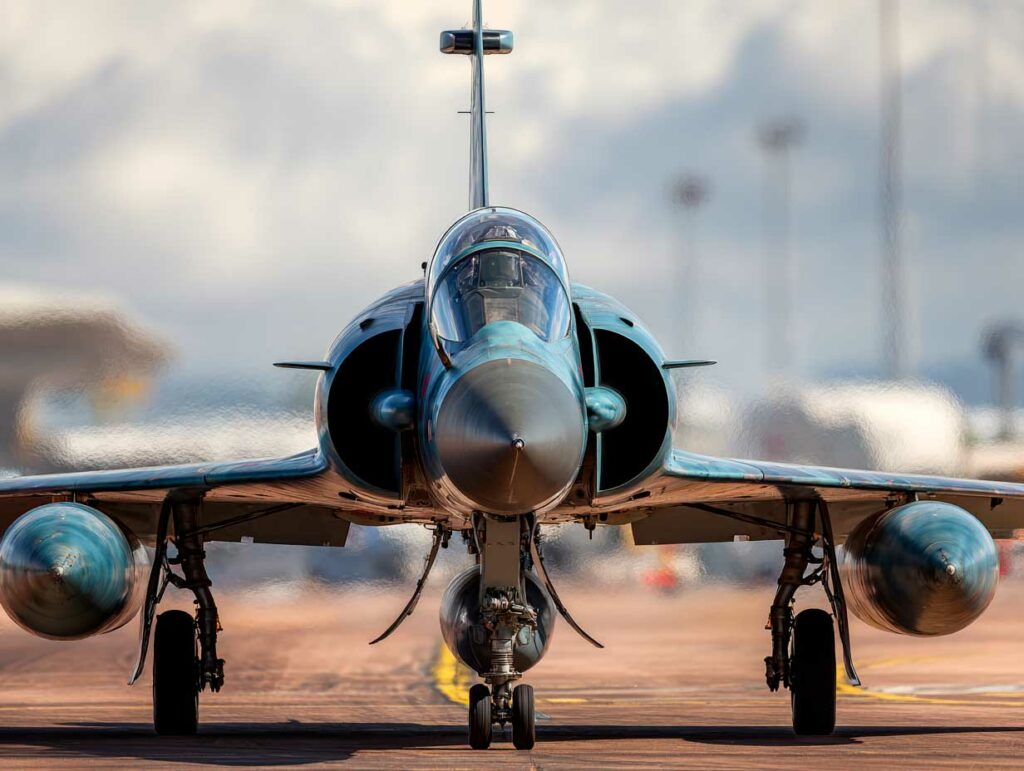
Morocco is set to receive 30 Mirage 2000-9 aircraft from the United Arab Emirates, modernizing its air fleet in the face of tensions with Algeria and strengthening its regional stature.
The Moroccan Air Force is continuing its modernization by moving closer to the acquisition of around 30 used Mirage 2000-9 aircraft from the United Arab Emirates. The transfer, which has been under discussion since 2022, could take place from 2027, when the Rafale jets ordered by Abu Dhabi are scheduled to enter service. This strategic purchase, authorized by France as the manufacturer, marks an important step for Morocco, which is seeking to rapidly improve its air capabilities while adapting to the geopolitical requirements of the region.
Faced with an Algeria equipped with advanced Russian aircraft such as the Su-30MKA, this operation aims to redress an operational imbalance. It would provide Rabat with a high-performance multi-role fighter aircraft that is perfectly suited to modern tactical realities. However, the prospect of integrating the Mirage 2000-9 into the Moroccan fleet poses logistical, technical, and political challenges. Nevertheless, the expected benefits in terms of range, reliability, and versatility are considered significant enough to justify this move. The acquisition of the Mirage 2000-9 could thus reposition Morocco as one of the leading air power players on the African continent.
Technical configuration of the Mirage 2000-9
The Mirage 2000-9 is an advanced evolution of the Mirage 2000-5, developed specifically for the United Arab Emirates in the late 1990s. This single-engine aircraft is designed to perform air superiority, interdiction, and ground attack missions. It is equipped with RDY-2 radar, capable of detecting targets at a distance of over 100 kilometers, with simultaneous tracking of multiple targets and advanced air-to-ground capabilities thanks to SAR mode.
The Mirage 2000-9 also features the MDPU digital mission system, which significantly improves avionics management compared to previous versions. The TOTEM 3000 INS navigation system, combined with multifunction LCD screens, offers improved ergonomics for the pilot and increased reliability in flight. These aircraft can be armed with MICA IR and EM air-to-air missiles, as well as long-range cruise missiles such as the Black Shaheen, an adapted version of the SCALP-EG.
In terms of propulsion, the M53-P2 engine delivers 95 kilonewtons of thrust in afterburner, enabling the Mirage 2000-9 to reach a speed of Mach 2, or approximately 2,400 km/h at high altitude. With a range of nearly 1,500 kilometers in standard configuration, and much more with external tanks, this aircraft meets a wide range of operational requirements.
The Mirage aircraft in question are in very good condition. They have undergone rigorous technical monitoring by the Emirates in collaboration with Safran Aircraft Engines and GAL. However, Morocco will have to integrate these aircraft into its own maintenance system, which will require specific training and significant logistical adjustments.
The transfer process between the Emirates and Morocco
The contract covers around 30 Mirage 2000-9 aircraft, half of the Emirati fleet. The schedule is linked to the gradual delivery of the 80 Rafale aircraft ordered by the Emirates in 2021, for an estimated amount of $18 billion, or approximately €16.5 billion. The first deliveries are expected in 2027, which would allow for a gradual transfer of the Mirage aircraft to Morocco.
The export of such equipment requires the agreement of the country of origin, in this case France. Paris has reportedly given its agreement in principle to facilitate the operation, in a context of diplomatic rapprochement with Rabat. Logistical support could also be provided by French companies, thereby strengthening French industrial influence in the Maghreb.
Another key issue concerns the maintenance of the transferred aircraft in operational condition. Morocco does not currently have a complete infrastructure dedicated to the Mirage 2000-9. It will have to adapt its technical resources to enable long-term support. Partnerships with companies such as Safran and GAL are being explored to provide personnel training and spare parts.
At the same time, specific training for Moroccan pilots will need to be set up, probably in collaboration with the UAE Air Force or at approved centers in France. This phase is crucial to ensure a smooth transition and optimal use of the new aircraft by the Moroccan forces.

Strengthening Morocco’s operational capabilities
The Moroccan Air Force currently has around 20 F-16C/D, modernized Mirage F1, and Northrop F-5 Tiger II aircraft that are nearing the end of their service life. The arrival of the Mirage 2000-9 would represent a significant upgrade in terms of engagement capabilities.
On a tactical level, the Mirage 2000-9s would enable interception, escort, enemy defense suppression, and long-range precision strike missions. With missiles such as the MICA and Black Shaheen, Morocco would be able to strike several hundred kilometers away while operating beyond the range of enemy defenses.
Complementarity with the F-16 is another advantage. Where the F-16 offers a versatile and modern platform, the Mirage 2000-9 would provide proven robustness, particularly in desert terrain, and rapid response capability. This combination would allow for a more refined division of roles within Moroccan squadrons.
In terms of operational volume, having 30 new fighters greatly increases the number of aircraft available for simultaneous missions, whether defensive, deterrent, or reconnaissance. This quantitative capability is essential to effectively cover a territory of more than 700,000 km², bordering a neighbor with more than 50 Su-30MKAs.
Geopolitical implications for the region
The arrival of the Mirage 2000-9 would alter the balance of power in the region. Algeria, equipped with modernized Su-30s and MiG-29s, remains well equipped but has to contend with more complex maintenance and dependence on Russia. With this acquisition, Morocco is aligning itself with a Western approach that is tactical, industrial, and diplomatic.
This transfer also illustrates the divergent strategic choices between Rabat and Algiers. Morocco is banking on Western platforms with high availability rates that are compatible with NATO standards, while Algeria continues to source its equipment from Moscow amid uncertainty linked to the war in Ukraine.
The regional perception of this reinforcement is twofold. From Morocco’s point of view, it is a logical response to an uncertain security situation, particularly in the Western Sahara region. From Algeria’s point of view, this rearmament could be seen as a provocation or an attempt at intimidation.
In the medium term, this rebalancing could encourage both countries to further modernize their respective forces. It could also complicate regional mediation efforts on sensitive issues, particularly if European diplomacy struggles to assert itself.
War Wings Daily is an independant magazine.